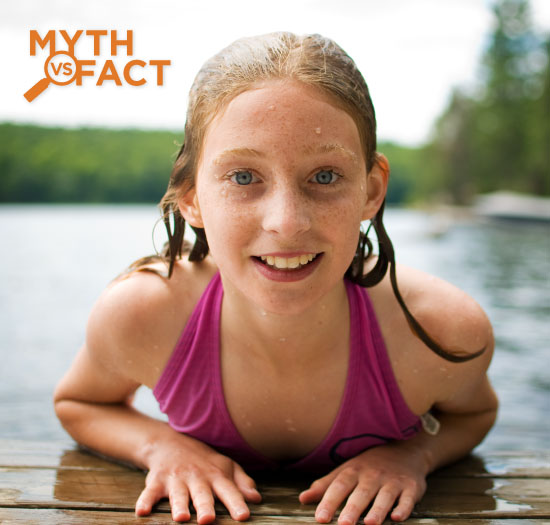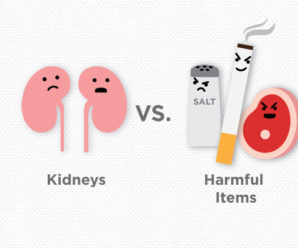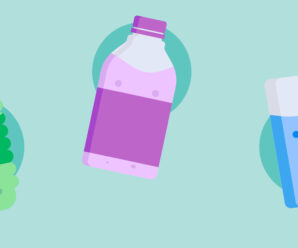
You’ve heard the myth – don’t swim after you eat. It’s rumored a full stomach can lead to muscle cramps while you’re swimming, which could cause you to drown.
Although this swimming safety myth has been busted, be aware of other hazards while you’re having fun in the water.
Myth: Eating before swimming causes muscle cramps.
If you get muscle cramps while swimming, it’s probably not because you have a full stomach.
“When your body is digesting food, this doesn’t mean all its energy and blood is concentrated on that effort,” said Dr. Maria Alvarez, a Marshfield Clinic family medicine physician. “Your body still has plenty of energy and blood to digest your food and keep your arms and legs moving.”
Cramping is related to fatigue. You can get a cramp even if you haven’t eaten because of dehydration or electrolyte imbalance.
Myth: Alcohol makes a beach day more fun.
It’s safe to eat and drink before swimming, but there’s one beverage you should stay away from – alcohol. Alcohol can severely impair your judgment and lead to risky behavior in the water.
“Drinking alcohol increases your risk of developing a vocal cord spasm if water enters your windpipe while you’re swimming,” Alvarez said. “This can block your airway and potentially lead to drowning. Alcohol and swimming don’t mix.”
Avoid alcohol if you’re supervising children in the water, even if you aren’t swimming.
Myth: You don’t need sunscreen while swimming.
Being below the surface of the water doesn’t protect your skin from the sun. Swimming causes sunscreen, even water-resistant varieties, to wear off faster.
Reapply sunscreen each time you get out of the water or dry off with a towel, or according to the directions on the bottle. Water-resistant sunscreens are effective for 40-80 minutes, according to the American Academy of Dermatology.
If you do get a sunburn, Care My Way® may be able to help. Download the app to get started.
Myth: People splash and yell when they’re drowning.
People who are drowning don’t always kick and scream like they do in the movies. Drowning victims, especially children, often can’t call for help or wave their arms and they drown silently, according to the U.S. Centers for Disease Control and Prevention.
Drowning can happen quickly, so parents and caregivers should devote their full attention at all times to children in the pool. Stay within arm’s reach of toddlers. Keep kids away from flat pool drains, which can trap children underwater by suction or entangling hair and limbs.
Make sure children wear properly fitted life jackets, especially in open water or if they don’t swim well. Life jackets are a must for all kids under age 13 on moving boats.







Leave a Reply